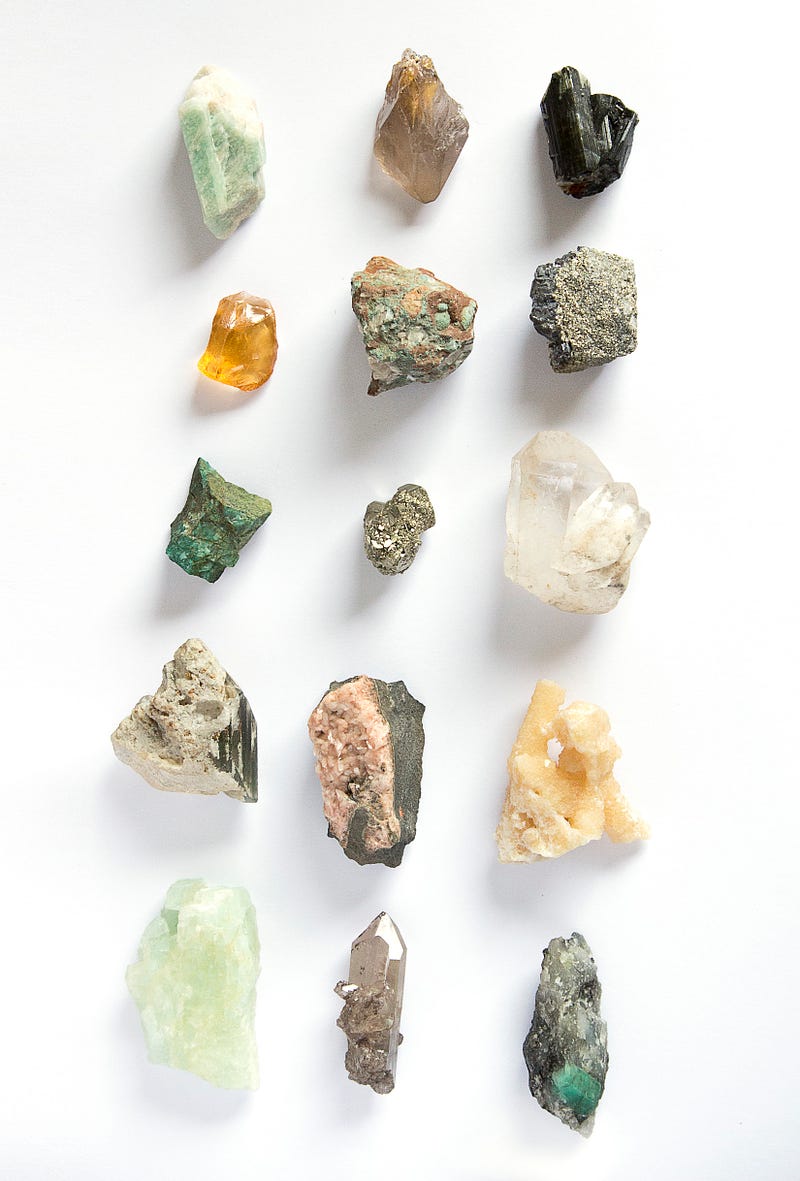Crystals and Their Misconceptions: A Critical Look
Written on
Chapter 1: The Illusion of Healing Crystals
While many believe that crystals can alleviate anxiety, the reality is quite different. Imagine if Amethyst, Rose Quartz, and Citrine could actually relieve our emotional distress, bestow good fortune, and empower us to pursue our most ambitious dreams. What if crystals like Agate, Carnelian, or Fluorite could erase physical pain with just a visit to a local New Age shop? (You know the one, situated next to the aging Dairy Queen and that failing Greek diner.)
If such claims were true, it would indeed be miraculous. We could simply place children suffering from lymphoma on yoga mats surrounded by colorful crystals, eliminating the need for costly chemotherapy, insurance, or early morning doctor visits. Problem solved. New Age practitioners triumph over traditional doctors.
However, in truth, crystals impact our well-being as much as a starfish off the coast of Australia. Regrettably, that's the case.
Before diving deeper, it's essential to explore the origins of the belief in the healing power of gemstones, how this notion emerged, and how it has transformed in contemporary society.
Historically, the Sumerians incorporated crystals into their mystical practices (and no, there was no real magic involved). Later, the Egyptians utilized gemstones in burial rituals and adorned themselves with them for aesthetics. Beyond jewelry, various cultures began attributing specific abilities to crystals, often motivated by commercial interests. Every culture seemed to ascribe different healing properties to the same stone.
Take Rose Quartz, for example. In ancient Egypt, it was thought to prevent aging—certainly fitting for a culture fascinated with death and the afterlife. Conversely, the Romans regarded Rose Quartz as a symbol of ownership. In the Middle Ages, it was believed to have curative properties when mixed into potions. Fast forward to today, and Rose Quartz is now heralded as a magnet for love, fueled by Hollywood's obsession with finding "the one" and achieving romantic bliss.
Over time, the meanings attached to crystals have shifted. Ancient civilizations, which often attributed natural phenomena to divine beings, also found significance in these stones. While it may be easy to label these beliefs as naïve, one can understand their origins in human ignorance.
In our modern world, this same ignorance persists. Many people subscribe to the idea that our bodies are governed by chakra centers or energy fields, with crystals capable of influencing or healing our energies. Despite the lack of scientific evidence supporting such claims, I hold the belief that we are spiritual beings navigating a human experience. However, I recognize that concepts like "Chakra" or "Energy" can vary widely in interpretation. My understanding of spirituality is shaped by my personal experiences, yet I strive to remain grounded and objective.
I've observed that while the New Age community often borrows concepts from Eastern traditions, many crystal buyers do so out of a sense of obligation or misunderstanding. I recall my own experiences of purchasing crystals, convinced that they were essential for my spiritual enlightenment. I would scatter them on my body, aiming to meditate in a metaphorical field of love and light. Sometimes I felt uplifted, but other times, I sensed no change at all.
As I faced life's challenges, I realized that these New Age ideals—and the crystals I had relied upon—were ultimately ineffective. What I once viewed as solutions became clear as mere trinkets. Sure, they were "spiritual" trinkets, but trinkets nonetheless.
It's crucial to remember that true inner growth doesn't rely on external influences. If it did, it wouldn't be a personal journey, nor would it empower us in a meaningful way.
Research supports this notion. For instance, a British study from the early 2000s gathered eighty participants, half of whom received fake crystals while the other half got real ones. After meditating for five minutes, they were asked to share their experiences with the crystals. The findings revealed that those who believed in the healing properties of crystals reported feeling twice as positive as those who did not—and interestingly, the believers had the fake crystals.
The conclusion was straightforward: Crystals lack inherent healing properties, relying instead on the placebo effect.
This aligns with my own discoveries, which emerged independently of any scientific studies or discussions with like-minded individuals. Both then and now, I contend that the primary benefits of these gemstones lie in offering a false sense of security, beautifying our spaces, and providing a fleeting connection to a universe that remains indifferent to their efficacy—because a spiritual awakening does not necessitate crystals.
Understanding oneself—true spirituality—doesn't come with a checklist to complete. It’s a deeply personal evolution that varies for each individual. No one is concerned about your affinity for crystals or whether you find them trivial; it's vital to stop believing they will cure your ailments or fix your relationships.
While they may offer intriguing insights and serve as decorative items, relying on them to resolve your issues is misguided. This is precisely the notion that those selling such items hope to perpetuate. On your spiritual journey, focus on your own awareness rather than getting sidetracked by others' belief systems. Embrace discomfort as part of life and recognize that crystals are not a simple remedy for your struggles.
Ultimately, feel free to enhance your living space with beautiful objects, and don’t take life too seriously—after all, there might just be a crystal for that.

Chapter 2: Exploring Crystal Use in Modern Society
In this insightful video titled "Crystals For Stress And Anxiety," experts delve into the role of crystals in managing stress and anxiety, exploring their historical significance and modern applications.
The second video, "9 Crystals That Can Help Cope With and Prevent Anxiety," presents a list of crystals believed to aid in anxiety management, offering viewers practical tips for incorporating them into their lives.